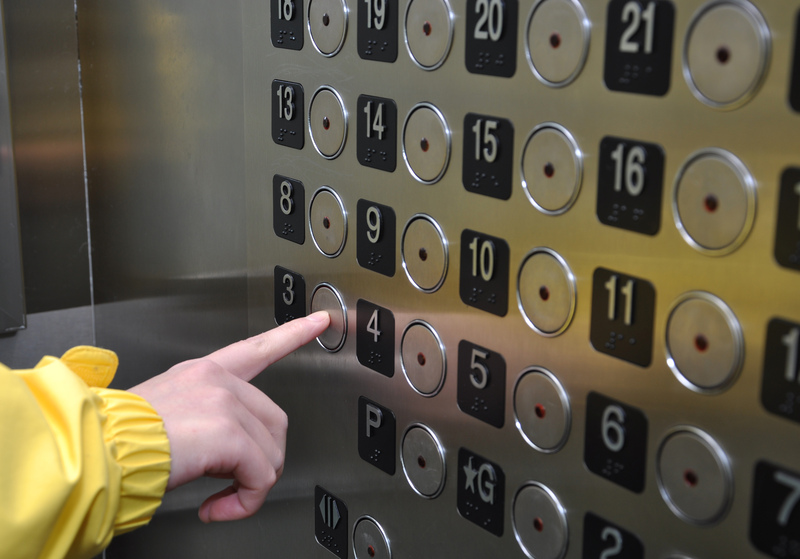Expert Tips for Bed and Mattress Moving Success
Posted on 25/06/2025
Expert Tips for Bed and Mattress Moving Success
Moving can be a challenging task, especially when it comes to safely relocating your oversized and heavy furniture. Beds and mattresses are some of the most difficult items to move due to their bulk, weight, and tendency to get damaged during transit. Whether you're planning a local move or transporting your bed set across states, being well-prepared is essential for a hassle-free experience. This comprehensive guide will walk you through everything you need to know for bed and mattress moving success.

Why Proper Bed and Mattress Moving Techniques Matter
It's easy to underestimate the complexity of mattress transportation and bed moving. Without the right strategies, you risk damaging expensive furniture, injuring yourself, or making your new home a mess. Expert preparation helps:
- Preserve the lifespan and comfort of your mattress
- Prevent scratches, scuffs, and breaks to bed frames and headboards
- Minimize risk of injury from lifting heavy objects
- Protect walls, doorways, and floors from damage during the move
- Ensure smoother setup and transition in your new space
Essential Supplies for Moving Beds and Mattresses
Before you attempt to move your bed and mattress, gather these essential supplies to streamline and safeguard the process:
- Mattress bags or covers - Protects against dirt, moisture, and tears.
- Furniture blankets or moving pads - Cushions bedframes and headboards from knocks or scratches.
- Stretch wrap - Secures loose parts or padding on the frame.
- Ratchet straps or ropes - Keeps items from shifting during transit.
- Screwdrivers and wrenches - For disassembling and reassembling bed frames.
- Ziplock bags - Stores hardware like bolts and nuts.
- Gloves - Protect your hands from splinters, metal, or sharp edges.
- Dollies and hand trucks - Make it easier to move heavy items with less strain.
- Labels and markers - Help keep all components organized.
Step-by-Step Guide to Mastering Bed and Mattress Moving
1. Plan Ahead for Bed Moving Success
Start by measuring your bed and mattress. Know the exact dimensions and compare them to every door, hallway, and staircase they'll encounter. If you notice any tight squeezes, plan alternative routes or prepare to disassemble components.
- Pro Tip: Take photos of assemblies before you start; this makes reassembly much easier.
- Sketch a layout of the new space, indicating where large furniture pieces will go.
- Avoid moving your bed last-minute to minimize the risk of accidents.
2. Disassemble Your Bed Frame Properly
Carefully disassemble your bed frame to make moving safer and reduce the chance of breaking slats or posts.
- Remove bedding - Start by stripping all sheets, pillows, and mattress covers.
- Take out the mattress/box spring and lean them against a wall.
- Unscrew headboards and footboards; keep all hardware in labeled bags.
- Wrap all detached parts in moving pads or blankets, especially ornate or wooden components.
- Secure slats or rails together with tape or stretch wrap so nothing gets lost.
3. Protect Your Mattress and Box Spring
Mattresses are an investment! They're easily soiled, torn, or warped during moves, so use high-quality mattress bags and box spring covers for protection.
- Slide the mattress into a plastic bag and seal it tightly with packing tape.
- If moving in rain or snow, double-bag the mattress or wrap in extra blankets.
- For memory foam or hybrid mattresses, always transport them flat to prevent distortion.
- Do not bend or fold innerspring mattresses - it can damage coils and compromise comfort.
4. Safety First: Moving Techniques and Equipment
- Recruit at least one helper, especially for king or queen size mattresses and heavy headboards.
- Wear protective gloves and sturdy shoes.
- Use a dolly or hand truck for the box spring or mattress. Balance carefully and secure with straps if going downstairs or across long distances.
- Bend at the knees, not your waist, when lifting to avoid back injuries.
- Lift from underneath the mattress, not by handles (these can rip).
- Pivot around tight corners slowly to avoid scrapes on walls or floors.
- Cushion doorways with towels or blankets in narrow spaces.
- Never drag a mattress or bedframe on the ground - it destroys fabric and weakens joints.
5. Loading and Securing in the Moving Truck
A successful move not only depends on getting your mattress and bed out the door, but also on proper loading techniques within the moving vehicle. Here's how to do it right:
- Place the mattress on its side toward the back of the truck, unless it's memory foam (which should be flat).
- Use straps to secure your mattress and prevent it from sliding.
- Stow headboards and rails upright against the walls, padded to avoid scratches.
- Stack lightweight boxes on top of the mattress or box spring for efficient space use.
- If weather is a concern, make sure to tarp everything before shutting the doors.
6. Unloading and Reassembling Your Bed Set
- Unpack headboards, footboards, and mattress covers before bringing items into the house.
- Carry mattresses and frames along the planned path, watching for low ceilings and tight corners.
- Clean all parts with a cloth once indoors, especially if there was dust or water exposure.
- Reassemble the bed frame, referencing photos for easier setup.
- Let mattresses air out for at least 1-2 hours before putting bedding on.
- Check all bolts and screws for tightness to avoid squeaking or instability.
Expert Mattress and Bed Moving Hacks
- Use fitted sheets to protect a mattress in a pinch if you don't have a moving bag handy.
- Carry mattresses using the "bookend" technique: One person at each narrow end for more control.
- Work in pairs: Handling beds is much safer and faster with a partner.
- Store all disassembled hardware in a single, clearly marked box or bag attached to the bed frame.
- Label everything--headboards, footboards, rails--with masking tape for easier assembly.
- If floors are slippery, keep a runner or cardboard pathway for safer carrying.
Mistakes to Avoid When Moving Your Mattress and Bed
- Skipping protective covers: Even the cleanest trucks and hallways have dust and debris. Never move mattresses bare.
- Folding mattresses not designed for it: This can permanently damage innerspring models.
- Ignoring measurements: A common moving disaster is furniture that won't fit through the door or stairwell.
- Forgetting hardware: Lost bolts can delay your reassembly by days.
- Dragging furniture: This can harm floors, the bed frame, and your back.
- Insufficient help: Always ask for assistance with cumbersome or heavy items.
When to Call Professional Bed and Mattress Movers
If your home has tight staircases, elevators, or multiple floors, or you're moving particularly large or fragile furniture, hiring expert movers is a smart investment. Professionals offer:
- Specialty tools and transport equipment for heavy beds and mattresses
- Insurance coverage for damages in transit
- Years of experience with tricky moves, reducing risk of injury
- Efficient packing and setup for your new home
If you decide on a DIY move, still consider consulting with movers on challenging parts, such as transporting luxury mattresses or oversized bed frames.

Common Questions About Successful Bed and Mattress Moves
Can you fold a mattress for moving?
*Most standard innerspring mattresses* should never be folded, as this can permanently bend coils and reduce support. Some foam or hybrid mattresses can be carefully bent, but check your manufacturer's recommendations first.
How should you store a mattress if you're not moving it directly?
Mattresses should be stored flat in climate-controlled areas, inside a protective bag or cover, to avoid mold, mildew, or warping.
Is it safe to move a mattress in the rain?
It's best to wait for clear weather, but if not possible, double-wrap the mattress in thick plastic or waterproof covers before loading. Move quickly and keep tarps handy.
How do you lift a heavy mattress?
Always lift with your knees, support from below, and never try to carry a large mattress alone. Using handles (if present) or a strap system with a partner offers more stability and control.
Do professional movers provide mattress bags?
Many moving companies offer mattress bags for a small fee or as part of a full-service package. Be sure to ask about protective materials ahead of time.
Conclusion: Move Your Bed and Mattress Like a Pro
Relocating your bed and mattress doesn't have to be a daunting ordeal. With proper planning, the right supplies, and expert techniques, you can safeguard your furniture, your new home, and yourself against unnecessary hassles. Remember:
- Always measure spaces ahead of time
- Disassemble bed frames and protect all components
- Never move unprotected mattresses
- Use teamwork and equipment to prevent injury and damage
For a truly seamless mattress and bed moving experience, don't hesitate to reach out to professionals for quotes--especially for complex or long-distance moves. By following these expert tips, you'll ensure that your next move is as comfortable and safe as your favorite bed!



